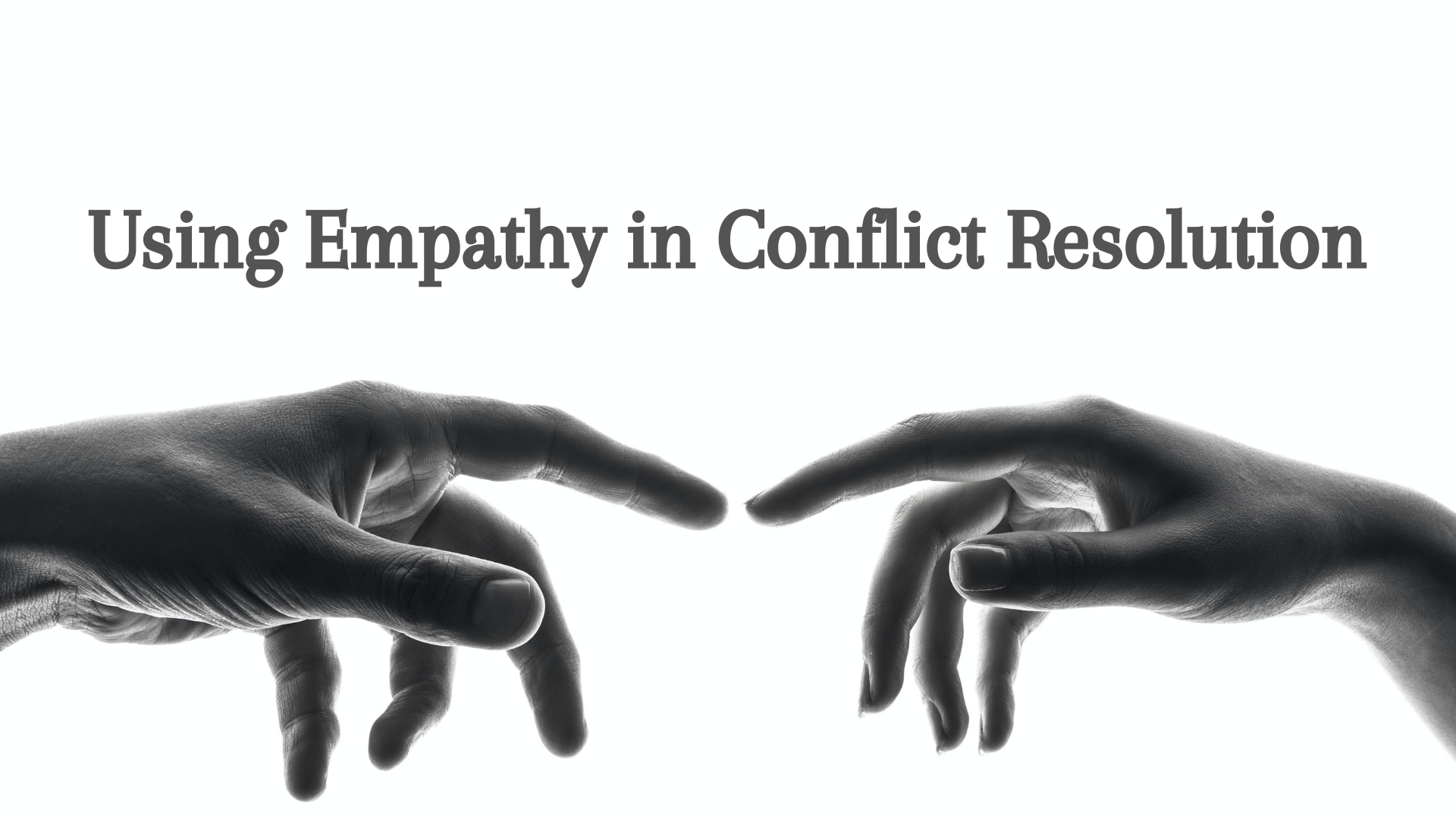Should I Have Rules For My Kids?
/Centered-Set parenting and family system leadership.
Should you have rules for your kids or should you let them do whatever they want? While those two extremes don’t convey all of the available options, what should a parent/child relationship be like? What does that require of parents? And how will that affect kids?
Taking cues from leadership techniques, a modern perspective of raising children involves examining the three overall approaches to parenting, centered versus bounded set philosophy, and intrinsic motivation.
Full disclosure: I, as a parent, have rules for my kids. This writing is, therefore, biased and more of an offering of my approach than a general survey. But my approach comes through lots of exploration. And that short disclaimer doesn’t do justice to the complexity of how the sentiment actually unfolds in reality.
What I think you’ll find in this conversation is that there is no objectively correct way. There is, however, particular principles and techniques that are not only worth your attention but can be transposed into a variety of household contexts and a variety of other fields, as well.
Part One — A Brief History of Parenting
Parenting has changed more in the last one hundred years than the previous ten thousand.
The brief history of parenting is that — for most of the human experience — parenting was a socio-economic reality. A more biological take would also suggest that parenting was a means to continue one’s genetic strain through reproduction. A bit oversimplified. Also, a bit bleak. Yet, it’s worth considering that any conversation we have in our contemporary society about parenting is vastly unrelatable to the epochs of history that have defined the majority of human life.
For most of history, you as a parent had one job: Keep the child alive and teach them the process of survival so that everyone increases their likelihood of survival, together. You weren’t worried about what decorations you ought to have for their birthday party. There was no captivation on cute outfits or worries about screen time. No energy was spent wondering if they were in just the right number of activities. You probably would not have had much concern if they were happy, either.
Did parents in other time periods love their children? I assume so. Did they care about them and pursue their well-being? One can hope. But junior better get the crop harvested in time and your daughter’s best value came in the form of a bride price. It was a different world. One where parenting was about furthered ancestry and socio-economic value.
The differences in that experiences also implicate the way parenting was done. Techniques don’t go far beyond requiring that your children were helpful. You just needed their behavior to reflect the social needs of the group you belonged to. And this may be where previous forms of parenting are the most disconnected from the modern — the emphasis of parenting was that children needed to live up to the expectations of parents. They were responsible for meeting the demands of the household. And that’s it.
As a parent, it was essential that you punished errors, got them married, guided their skill in the family trade so they could continue to help, and hope that they produce more offspring. A simple life that none of us would actually want. But this is why it was so common to have cultural motifs like honoring your parents; because that’s what it meant to be a child.
I often wonder what would happen if we were able to psychoanalyze just about any kid from most of human history. Would they sulk that their childhood was taken away from them? Would we have a staggering percentage of claims that their father never loved them? Seriously, is it possible that every child of days past carried with them the modern prevalence of childhood trauma and PTSD?
Let us also consider that the world inhabited by most of history was collectivist — one’s value and meaning were wrapped up in the larger group to which you belonged. Your happiness, joy, vitality, and survival only existed in reference to that of everyone else. While there are over-generalized tribal stereotypes, it is not wrong to say that this was an economic existence. Life unfolded through a domestic means of production. Simpler times. Also, more dangerous, difficult, and stressful times.
But then society changed. There was a rise in individualism. Healthcare expanded life expectancy. Technology accelerated. The concept of the family system evolved congruently. Households became more internal and less extended. Relationships became more transient and less stable. The inter-generational necessity of heritage was replaced with opportunities for success. The world changed. And the child-parent relationship changed with it.
If you are looking for something to blame, romanticism is the culprit. Marriages, too, were a socio-economic reality. Romanticism opened the opportunity for love. There was now a soulmate, just waiting to be found. With it, children were no longer a means to end; they were special and precious. It became important to provide happiness to your children; which blossomed an unprecedented fear that you might fail your children.
The relational disposition was reversed. The child was not responsible to the parent. The parent was now responsible to the child.
Because there was a newfound priority on the child’s individual experience.
Parenting was no longer defined by ancestral continuation or socio-economic value.
Parenting was now an existential experience.
Part Two — Three Approaches to Parenting
I imagine that the majority of parents throughout history never cared to wonder what the correct psychological approach to parenting was. For better or worse, it is a dominant and important concern for us today. Fortunately, it is also a subject that has been given much attention.
To keep from turning this diatribe into a historical survey, I’m going to insert my bias into the modern situation of parenting now before us.
As this existential shift occurred, an important ingredient of the household experience was lost — intrinsic belonging. To be fair, in previous epochs of history, a child’s belonging to their family was not of their own agency. Also, to be fair, the loss of inherent belonging came with what I assume is a healthier relational dynamic and many modern advantages of their own.
That being said, the challenging priority for modern parents is that belonging must be created and nurtured in order to occur. You, as a parent, must decide the relational composition of your household that will dictate the experience of the child and the family. The child has the agency to choose the family (or, at least, choose their propensity to the family) and the parent has the agency to create the family experience for the child. How, then, ought the parent create that experience so as to foster a particular form of belonging between the child and the parent?
In good Western-scientific form, this process has been categorized into three approaches for how a parent may relate to a child. Whether you belong to a household of parents and multiple children, a single-parent home, or undertake guardianship, these perspectives all apply.
The three approaches to this family system dynamic are based on the use of expectations and discipline (confrontation) versus nurture and care (warmth, love, etc). Of course, the categories are much more liminal than we might assume. It is best to think of these approaches as existing on a spectrum.
First is Authoritarian:
High expectations, confrontation, demands, and discipline with low nurture.
The second is Authoritative:
High expectations, confrontation, demands, and discipline with high nurture and care.
The third is Permissive:
Low expectations and discipline with high nurture.
Of the three, it is my opinion that one is particularly advantageous over the others. However, none are technically right or wrong. Simply by having the systematic approach before us can help us be intentional in choosing how we create an ideal family system dynamic. In all reality, most parents likely use a combination of these approaches. It is also fair to consider that one’s approach may vary depending on the situation.
Authoritarian Approach
Here are the rules and your role is to be obedient to them.
This approach is often stereotyped as the “old-school” approach. It gets a lot of critiques, some of which are fair — because the Authoritarian approach tends to elicit extrinsic motivation. Other critiques concern that parents using this technique are mean or that children are emotionally neglected. That’s a stylistic flaw, not a categorical one.
The real issue is that any resulting behavior from children is based on the expectations and discipline of the parent. They’re responding to rewards and punishments or approval and disapproval. Extrinsic motivation is when an action is done as a means to something else. A child behaves a certain way to meet expectations, not for the sake of behaving a particular way itself. Therefore, their belonging is extrinsic.
Needless to say, when it comes to rules, this approach has a lot of them. In fact, the entire dynamic is based on what the rules and expectations are. All of this leads to the concern that this approach has a relational distance to it. Authority and respect are used to condition particular behavior. And this isn’t always terrible. If a child is running into oncoming traffic, I bet you would take on an Authoritarian approach really quick. However, what this approach garners in terms of respect and discipline, it tends to lose in terms of trust and intimacy.
Essentially, the effect of belonging is a byproduct of rewards and punishment, not the relationship and because the relational dynamic is extrinsically motivated, there’s a lack of sustainability to it. As long as the circumstances remain that a parent can exert expectations and discipline, then all is well. If the perspective behind the rewards and punishments are valued by the parent as well as the child, then this is likely to endure. However, if those circumstances change (e.g., the child gets older) or the child does not affirm the value of the rewards and punishments, then the effect of this approach will only last as long as the parent can enforce it. In the end, that isn’t really belonging. At best, the Authoritarian approach offers protection and guidance; at worst, the approach remains distant and void of meaning in the relationship itself.
Permissive Approach
You can do whatever you want; as long as you know that you belong.
The Permissive approach is the opposite end of the spectrum and, in contrast, is singularly concerned about the relationship. There are few, if any, expectations because this approach seeks to develop trust and intimacy with unbridled permission. Discipline, therefore, is a barrier to connection. The only necessary outcome is an enjoyable experience in the present.
What the permissive approach avoids is creating behavior that is extrinsically motivated. Children are not abiding by expectations in order to gain satisfaction or approval. However, there is also a lack of motivation to gain anything. Belonging is assumed — which offers a mental and emotional environment of health — but the lack of expectations makes the family system quite stagnant. Further, as the household ecosystem changes, there is little catalyst to direct the change. Adapting to difficult circumstances or emergency situations is difficult because there are no foundational expectations to guide the family.
Authoritative Approach
You already belong, but there are expectations for how our belonging ought to look.
The Authoritative approach is a combination of the two approaches previously mentioned. Respect is prioritized through expectation, but trust is also prioritized through relational care and intimacy. Belonging is the priority, but there are rules in association with the function of belonging (as opposed to being requirements for belonging).
Following expectations or abiding by disciplines are not extrinsically motivated (i.e., done so as to gain approval or acceptance; or done to meet demands) but the parents are not just providing a present-moment experience for the children, either. Rather, both the parent and child are collaboratively pursuing the family dynamic for the sake of themselves and for one another.
There is still a hierarchical structure, but the parents must continue to earn trust in order to exercise that hierarchical structure’s power. The parents determine the rules, expectations, and intended behaviors for the sake of the household, but it is approached with the best interests of the entire family in mind as well as the collective insight provided by the family. The entire family is working toward particular outcomes, together. In leadership circles, this would be described as both “servant-leadership” and “lateral leadership.” It also means that the parents are abiding by their own expectations. Further, a common characteristic of the Authoritative approach is parents who take responsibility when they, too, have missed the behavioral mark.
For the children, having autonomy and voice in the process of the family system and having a direct association with the inherent benefits of the behavioral dynamic creates intrinsic motivation. Children are not just fulfilling requirements in order to get something as a means to an end, the actual participation in the family is valuable in and of itself. There is an intrinsic desire to belong as opposed to extrinsic conditions to achieve belonging. The sustainable benefit here is that the behaviors are self-motivated and are not only more likely to be embodied in the present, but to form certain characteristics that can transpose to an infinite number of situations and seasons of life. Because the child is self-motivated (as opposed to seeking reward or avoiding punishment), the behavior is more integrated in their identity. With extrinsic motivation, as soon as the reward or punishment fails to motivate, the child will pursue their own direction. The behavior only sustains if the conditions sustain.
So, why doesn’t everyone use the Authoritative approach?
First, this approach does not account for every situation. If a child is running into oncoming traffic, please do not consider this approach. Hopefully, a particular identity has been formed so as to keep the situation from occurring. However, in the present moment, it would be very appropriate to use a power structure that demands a rule. Each approach has its own advantages and, with intentionality, each can be appropriately deployed as necessary.
Secondly, this approach is quite difficult. It costs the parent something (a divestment of power, the need to follow their own expectations, etc) and it takes time. Because it is collaborative and because it works to develop a person’s identity, the Authoritative approach is simply hard to maintain consistently.
Third, this approach requires that clear standards are being used and that those standards are not only explained but also function in a way that both the parents and the children find value in them. It sounds simple — come up with a rule book, right? However, having the correct standards takes immense time to determine. Further, the standards are going to continue to evolve as the family continues to evolve. So, not only does a parent need to create a vision for the family system, the parent also must continually adjust that vision to the perspective of the children and then be willing to adapt the vision as they discover more and as the needs of the family change.
Finally, having rules that are intrinsically motivated is complicated. Being able to articulate the value of a rule as opposed to simply demanding a certain behavior is tricky. While children seem predisposed to ask, “Why?” to everything, adults seem less inclined to entertain the exploration. Sometimes this is discussed as natural consequences, but being able to cast a vision for why your family does or does not do something is much more difficult than simply saying no or, more commonly, “Because I said so.”
Part Three — An Example: Centered-Set Versus Bounded Set
The concept has its origin in primitive shepherding techniques. Essentially, there are two general approaches for seeing to the vitality of a flock or herd. You can keep the herd together by creating a boundary; say, a fence. This guarantees that the group will not venture astray. It’s quite limiting, sure — but it is efficient.
Another option, however, would be to have no fences. Sort of nomadic wanderings to go where you please. Slight problem, all the animals will quickly die.
A third take, however, is to forego the boundary, but also have a means of keeping the herd or flock safely together. To do this, the means of vitality (food, water, shelter, etc) would be placed in a central location. The animals are free to venture, but the centralization of their needs would keep them in safe proximity.
In common jargon, this is a leadership approach called centered-set versus bounded set and it is quite applicable to the three approaches to parenting.
The technical side of this example is that it is attempting to balance various approaches to ethics — namely deontology, consequentialism, and teleology. In centered-set, there is still technically a boundary; however, the boundary is implied because of the emphasis on a standard or vision that is prioritized and desired (the food and water in the center). A normal boundary is meant to keep certain spaces inaccessible. A centered-set boundary is meant to keep certain spaces so preferred that you constantly desire to move toward it and, therefore, not venture into difficulty.
In terms of parenting, the emphasis here is on how the rules or expectations are portrayed. Nothing is technically off-limits. Instead, a goal is so adamantly established that certain things become off-limits by default. The rules naturally extend from the standard and instead of using avoidance language (you aren’t allowed to) there is language of an ideal pursuit. There is a desired yes that implies numerous no’s.
This is where the emphasis of intrinsic motivation comes into play. Together, as a family, you are pursuing what is in the center and you do this because you are motivated by your desire for it. You aren’t behaving in a particular way to avoid punishment or seek rewards; you are behaving in a particular way so as to experience a good thing; which means that other options are out of the question because they would impede that good thing.
And that, as well, is the problem — you have to have the good thing. Or, the technical version: You have to have a teleological vision that implies deontological rules with consequential adaptability. Also, this good thing has to be seen as just that from the other members of the family (which requires time and consistency and their voice being a part of the process). But don’t forget, this must also apply to you, as well. You’re part of the household. You have to display it.
Are you asking your children to do what you aren’t willing to do yourself? Are you smoking what you’re selling? Kids, as it goes, are a mirror. They will reciprocate what they see.
It also must all be communicated and mutually understood. You can only move toward the center if you know that it exists.
What, then, are the standards for your family?
How do they need to adapt to ever-changing circumstances?
How do you communicate these to your children and how do you put them on display?
Most importantly, what do you do when the standards aren’t met? There is a difference between a rule and a process. Are you on the journey with them? Can you separate the child’s identity from their current behavior? Do they first and foremost belong or is that something they must earn?
Part Four — A Quick Note on Interacting with Children Who Are Not Your Own
Here’s the deal — none of this really applies to other children unless you have been given and earned the authority to do so. For example, there may be extended family relationships or close friendships where you have the time and presence to help develop standards and oversee the journey of becoming with children who are not technically yours.
Further, within given circumstances, everything said about parenting applies just as much to roles like teachers or coaches. It’s the same principles. Sure, the realm of practice is much more limited, but it applies.
For most, however, we have a greater chance of being around children in general with whom we aren’t seen as parent, teacher, or coach. So, which of the approaches should we use?
When interacting with children who are not your own, it is rarely acceptable to use the Authoritarian approach. Unless you have been given that permission by the family unit as a whole, then stay in your lane. Discipline and expectations are earned over time. You may have great intentions and be generally correct in your intervention, but you don’t have the authority to practice that authority in that specific context. The best impact you will have is to be an adult that those children can genuinely trust. Authoritarianism is not going to provide that and your good intentions will probably only have the effect of making them dislike you.
The Authoritative approach, however, does have a place. Given that you have earned the trust and authority of the family unit, it can be beneficial for an outside adult to affirm the standards and vision of a family and hold the children to it. I am often in situations where I have the opportunity to say, “We’re not going to do that because…” and I use the language of the family. Doing this without the respect and credibility of the parents and children could be detrimental. Proceed with caution and, unless you are certain, avoid this technique, as well.
That leaves the Permissive approach and, yes, this is the best way you can interact with children who are not your own and children that you are not holistically responsible for. No, this does not mean that you let children do whatever they want. Especially if you do have some responsibility for them in a given context, you’ll still need to exert some expectations. However, for most children, the greatest thing you can do is be the kind of person who they will call when they are in their most dire straits. Practicing the kind of presence that is purely there to nurture, love, and be someone they can trust is, quite honestly, the most important thing that many kids need.










![Three Reasons We're Lonely - [And Three Responses For Being Less So]](https://images.squarespace-cdn.com/content/v1/5963d280893fc02db1b9a659/1651234022075-7WEKZ2LGDVCR7IM74KE2/Loneliness+3+update+%283%29.png)





























